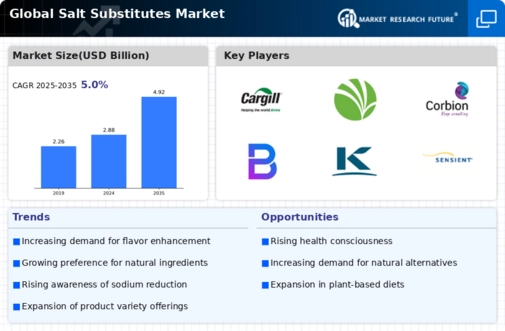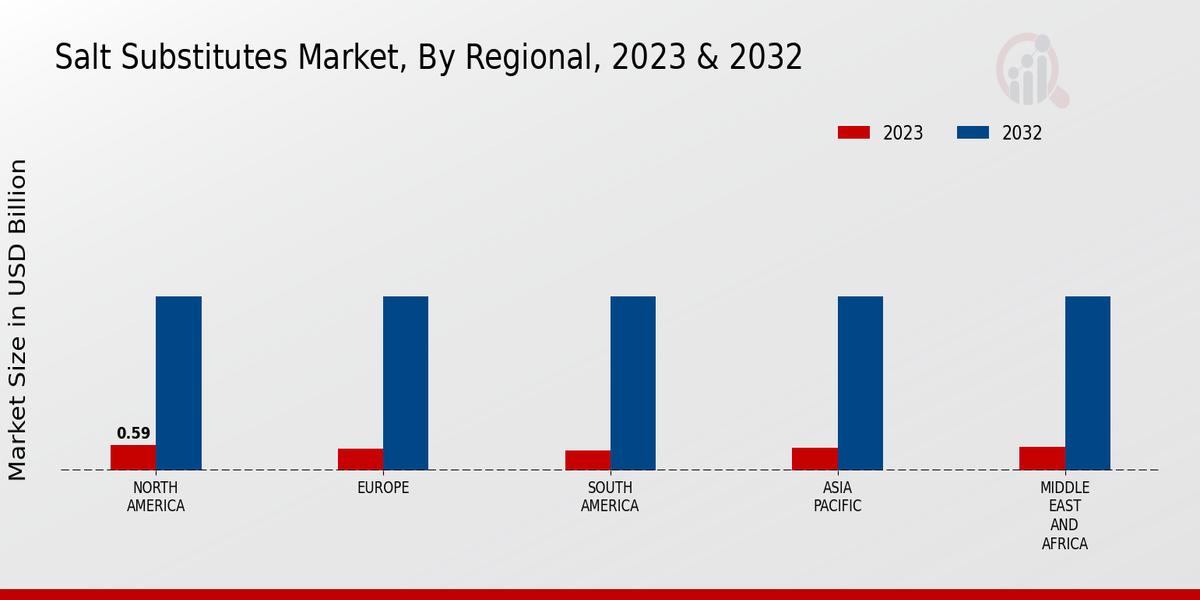Culinary Trends
The evolving culinary landscape, characterized by a growing interest in global cuisines and healthier cooking practices, appears to be a significant driver for the Global Global Salt Substitutes Market Industry. Chefs and home cooks alike are increasingly experimenting with various flavor enhancers, including salt substitutes, to create healthier dishes without sacrificing taste. This trend is particularly evident in the rise of plant-based diets and the incorporation of diverse spices and herbs. As culinary trends continue to evolve, the demand for innovative salt substitutes is likely to increase, further contributing to the market's expansion.
Aging Population
The demographic shift towards an aging population globally may significantly influence the Global Global Salt Substitutes Market Industry. Older adults often face health challenges that necessitate dietary modifications, including reduced sodium intake. This demographic is increasingly aware of the health implications of high salt consumption, leading to a greater acceptance and demand for salt substitutes. As the global population aged 60 and above is expected to reach 2.1 billion by 2050, the Global Global Salt Substitutes Market Industry is poised to benefit from this trend, with a projected market value of 4.92 USD Billion by 2035.
Regulatory Support
Government regulations aimed at reducing sodium consumption are likely to play a crucial role in shaping the Global Global Salt Substitutes Market Industry. Many countries are implementing policies that encourage food manufacturers to lower sodium levels in processed foods, thereby creating a favorable environment for salt substitutes. For instance, initiatives promoting public health and nutrition are becoming more prevalent, which may lead to increased availability and acceptance of salt substitutes in the market. This regulatory support could further enhance the market's growth, as consumers become more aware of the health benefits associated with reduced sodium intake.
Health Consciousness
The rising awareness regarding health and wellness among consumers appears to be a pivotal driver for the Global Global Salt Substitutes Market Industry. As individuals increasingly seek to reduce sodium intake to mitigate health risks such as hypertension and cardiovascular diseases, the demand for salt substitutes is likely to surge. This trend is particularly pronounced in developed nations, where health campaigns advocate for lower salt consumption. The Global Global Salt Substitutes Market Industry is projected to reach 2.88 USD Billion in 2024, reflecting the growing inclination towards healthier dietary choices.
Market Growth Charts
Innovative Product Development
The continuous innovation in product formulations and the introduction of new salt substitutes are likely to propel the Global Global Salt Substitutes Market Industry forward. Manufacturers are increasingly focusing on developing products that not only mimic the taste of salt but also offer additional health benefits, such as potassium-based substitutes. This innovation is crucial in attracting health-conscious consumers who are looking for alternatives that do not compromise on flavor. The Global Global Salt Substitutes Market Industry is expected to witness a compound annual growth rate of 5.0% from 2025 to 2035, indicating a robust growth trajectory driven by these advancements.











